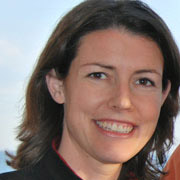 |
July 25, 2013Dr. Karen Lloyd, University of Tennessee, KnoxvilleOpening the black box of carbon degradation pathways in marine sediments through single cell genomics and metagenomics |
Abstract
Currently, microbial diversity in the marine subsurface far outstrips our knowledge about how the environment supports such a high diversity of microbes. One possible driver of microbial diversity in marine sediments may be differing abilities to access metabolic niches through different organic matter degradation pathways. Unlike terminal electron acceptors, organic matter is difficult to chemically characterize in marine sediments. However, we can begin to chip away at this complex problem by a close examination of gene homologues of characterized organic matter-degrading enzymes in single cells of uncultured subsurface organisms as well as metagenomes and metatranscriptomes. I will suggest interesting trends that may indicate how different members of the subsurface community have special adaptations to organic matter degradation. It may even be the case that the nature of organic matter degradation in the subsurface is fundamentally different (not just slower) than organic matter degradation in the oceanic water column.
Speaker Biography
Dr. Lloyd is an Assistant Professor at University of Tennessee, Knoxville’s Department of Microbiology. Her research integrates geomicrobiology, molecular biology, and geochemistry to determine how microorganisms influence marine geochemical cycles. The goal is to link uncultivated microorganisms to their geochemical functions and explore how these communities react to changing environmental conditions. Subseafloor ecosystems likely contain the majority of Earth’s prokaryotic biomass, but their geochemical effects are largely untested. Dr. Lloyd’s group focuses on the following questions: What are the carbon sources and electron acceptors/donors for uncultured microbial groups? Do these organisms use previously undocumented or recalcitrant energy and carbon sources? Are these organisms living at life’s energetic limits? Her lab uses single-cell technologies to link an organism’s function with its genetic identity without having to grow it in pure culture. The focus is on organic carbon degradation, production or consumption of greenhouse gases, metal cycling, and novel microbial energy sources. And study sites include deep-sea hydrocarbon seeps and hydrothermal vents, as well as nearshore sites.
Recording
Due to a recording glitch with the presentation software, we are regretably unable to provide a video of this seminar. Please see below for the Powerpoint used and accompanying audio.
Powerpoint: NSS-Lloyd.pptx [7.8 MB]
Audio: NSS-Lloyd.aac [40.3 MB]

